The ECB assesses this cycle’s slowdown with a “pause” likely
.png)
The European Central Bank is meeting this week and an interest-rate pause is priced into the markets. This follows the 25-basis-point hike in September, when economists were split on whether the “pause” would kick in.
The ECB has tightened by a cumulative 450 basis points in this cycle. It’s aiming to keep policy at restrictive levels for long enough to ensure that inflation returns to its 2% medium-term target in a timely manner.
An outlook for slower growth
The ECB’s last hike was at odds with its peers. The Federal Reserve and Bank of England both “paused” in September to gauge how their previous tightening was being transmitted into the economy. (Both of those central banks also adopted a “data-dependent” stance, which will see them assess how inflation pans out before making more hikes.)
The ECB also lowered gross domestic product projections for 2023, 2024 and 2025, as the next chart shows. It also includes the central bank's latest projections for different inflation measures, as well as employment metrics.
It’s particularly notable that the ECB cut its 2024 GDP estimate by 50 basis points to 1 percent. The central bank projects that it will likely (almost) reach its inflation target by the end of 2025.
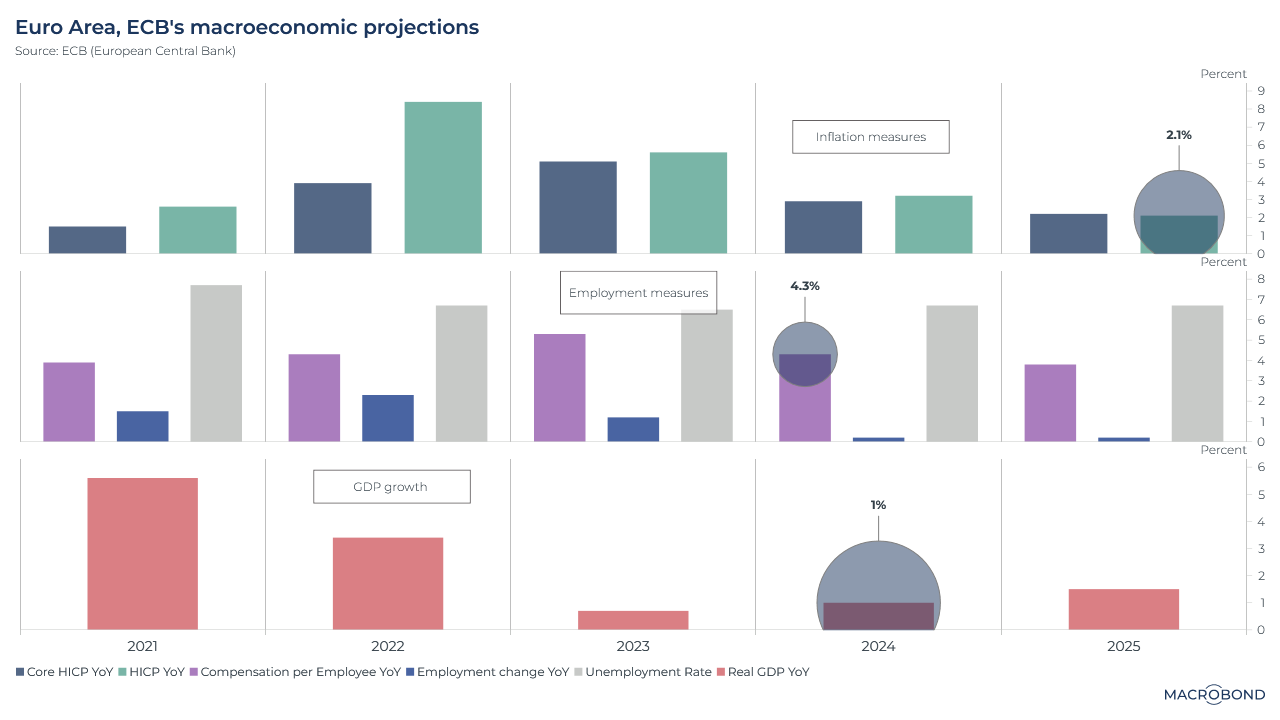
One central bank, many countries
The ECB faces a dilemma not shared by its UK and US peers; it makes policy for 20 different nations in the eurozone, and some of these countries are experiencing different economic dynamics. Spain, for example, remains supported by its services sector.
However, steep tightening, elevated policy rates and the increased cost of borrowing are leading to a gradual growth deceleration overall – and this is especially evident in the industrial sector. Germany and France are seeing a sharp contraction in manufacturing sentiment.
The risk of a sharp slowdown in the eurozone has increased substantially. The latest business surveys are already pointing to contraction in both services and manufacturing activity, as the next chart shows; the EU purchasing managers indices (PMIs) remain below 50.
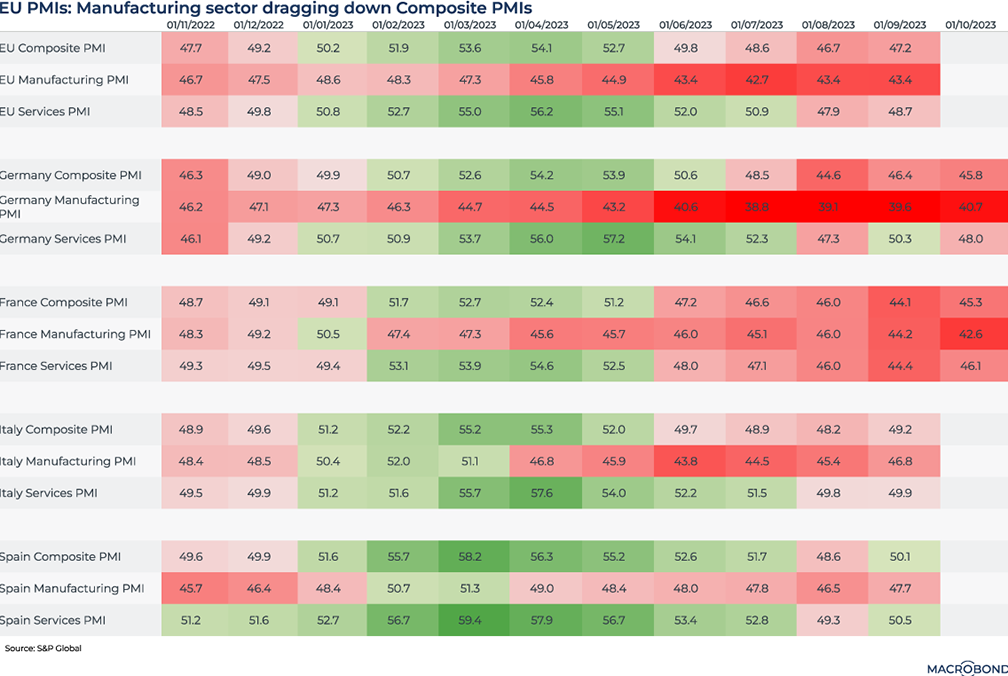
Inflation – and, more so, growth – are both surprising on the downside
The next chart looks at “surprise” indices from Citigroup that track whether economic or inflation data releases in the eurozone are beating or trailing expectations.
In all cases, the arrows are pointing
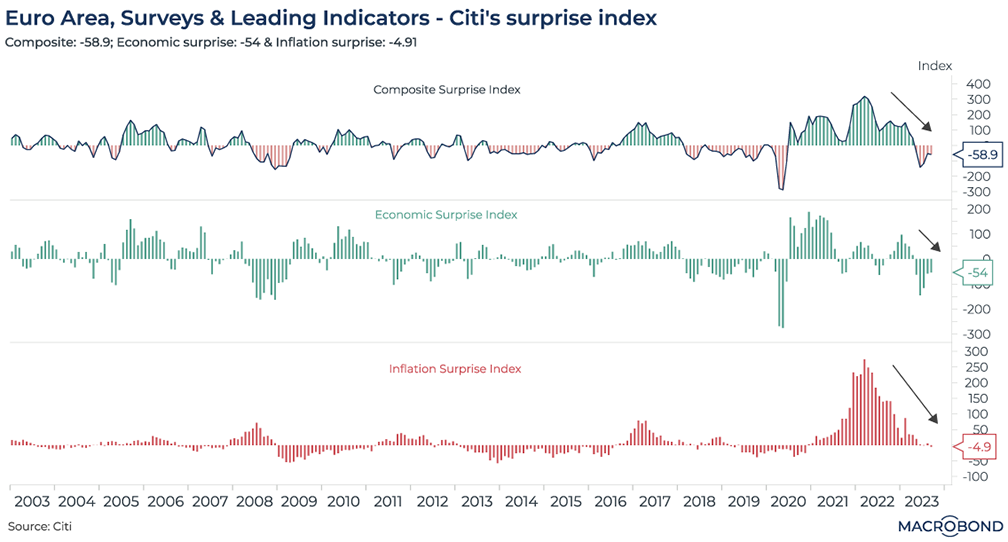
Our next chart measures the cost of borrowing, as measured by the ECB. As the second pane indicates, after many years of ultra-low rates, borrowing costs have moved swiftly higher for both households (financing their home purchases at 3.85 percent) and non-financial corporations (which can borrow at about 5 percent).
The top pane compares long-term to short-term borrowing costs. This indicator is currently steeply inverted (negative 107bps compared to a 20 year average of positive 19bps); this suggests that near-term investments will likely continue to see a drag.
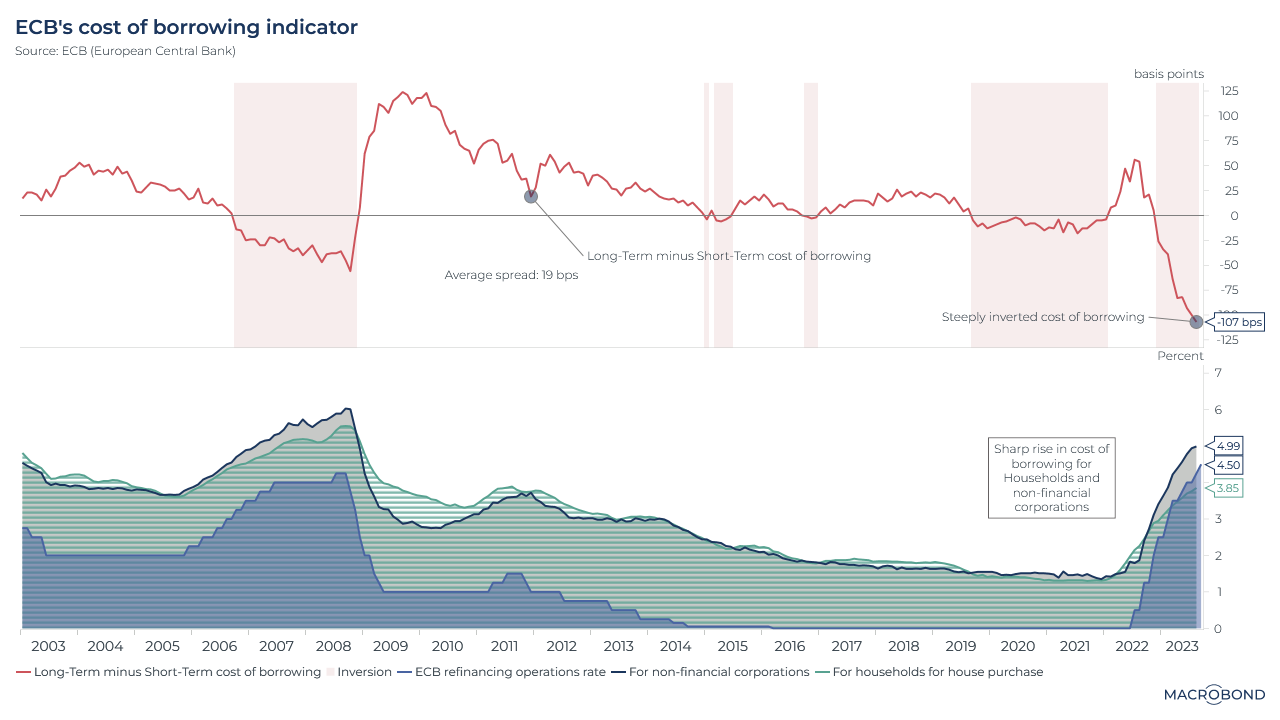.png)
Governments are also likely to tighten the fiscal strings amid a backdrop of their own growing interest cost burden. This, too, may impact consumption demand ahead.
These trends add up to a likely struggle for the eurozone’s economy over the next 12 to 18 months.
Meanwhile, the job market seems to be staying tight
Pressures on core inflation are supported by continued tight labour markets and positive wage growth. To illustrate this, the next visualisation (a scatter chart) is a Phillips curve for the EU, tracking the relationship between unemployment and inflation.
The curve was relatively flat (with a slope of 0.19 for the mean) from 2000-2020. The mean unemployment rate was 9.3 percent and inflation was 1.8 percent. But the Covid and post-Covid era has seen a much steeper slope (0.76), with mean unemployment rate at 6.7 percent and inflation at 5.1 percent.
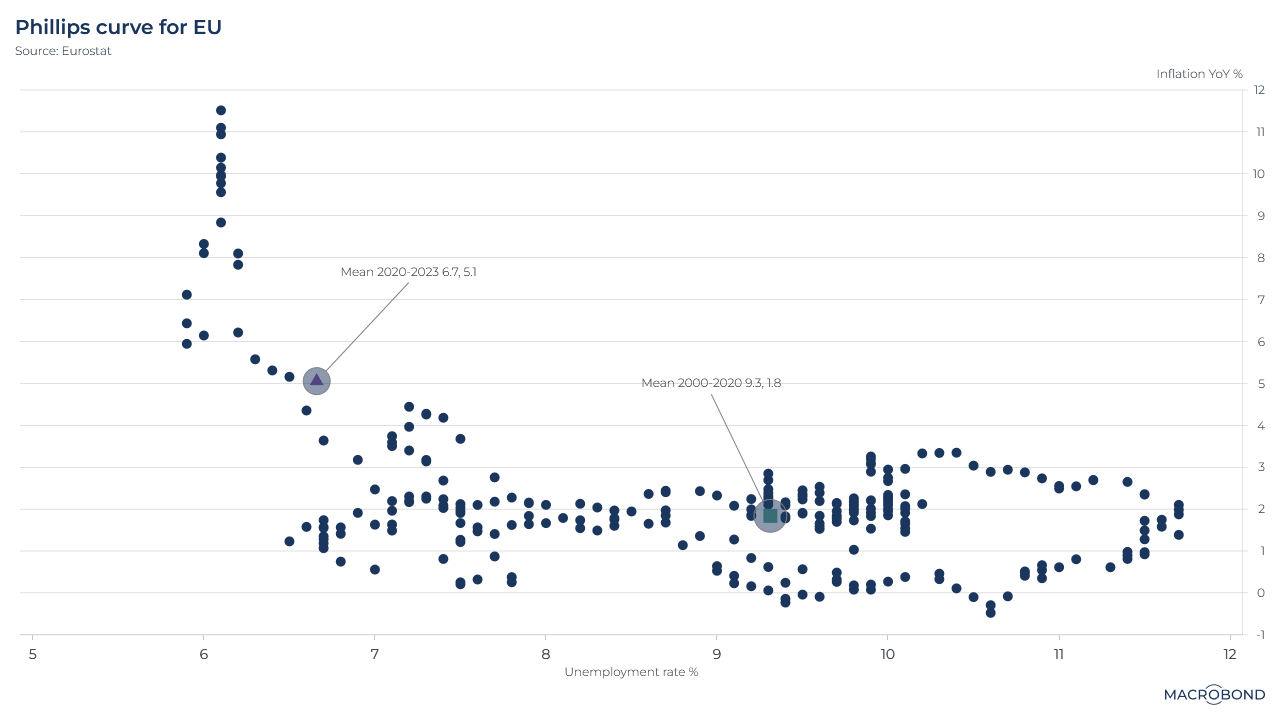
The ECB’s own projections for wage growth (4.3 percent in 2024) and the unemployment rate (still 6.7%, staying well below that 2000-2020 average) indicate that the labour market will weaken only gradually. That limits meaningful downslide in near-term core inflation: the ECB’s projection stands at 2.9 percent for 2024.
Money supply and energy prices
The ECB’s cumulative interest-rate and balance-sheet tightening is shrinking M3 growth – measure of the broad money supply in economy.
M3 growth has broadly led inflation trends, with the highest correlation at a 22-month lag observed over the last two decades.
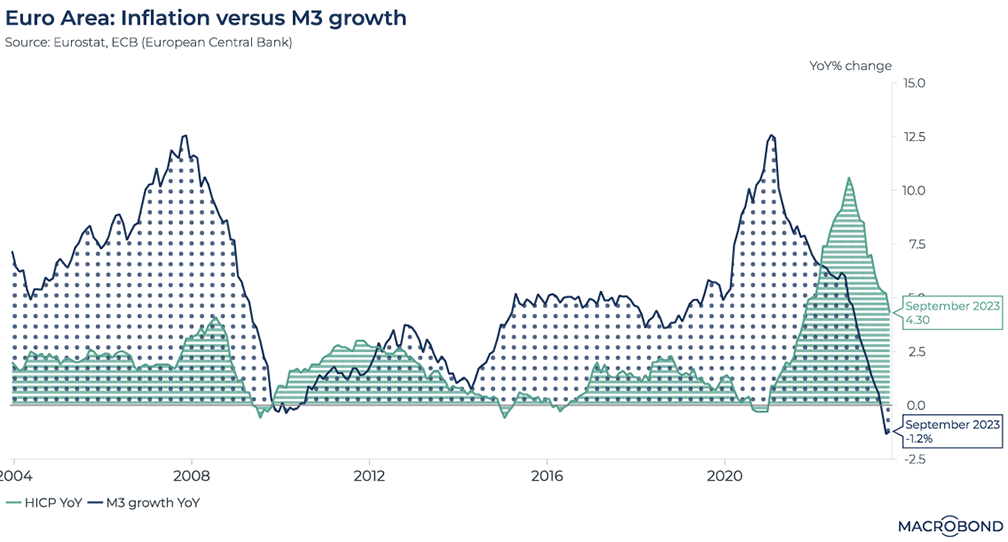
Indeed, inflation has come down a long way from the 10 percent levels shown in this chart. Falling energy prices and favourable base effects account for much of this slowdown; energy prices peaked in October 2022.
However, the next leg of deceleration may be slower given sticky core inflation. Services inflation can tend to keep overall inflation sticky for a longer period of time, and that has been factored into the consensus expectations.
The ECB’s policy decision – and beyond: watch for a longer pause
Given that the ECB expects inflation to stay above its target through 2024 amidst those tight labour markets, the central bank may choose to keep policy rates restrictive enough to contain demand-led inflationary pressures – even as growth falters.
So while policy rates may have reached their peak for the current cycle, an extended duration of these elevated rates may be the ECB’s indirect policy tool to manage inflation expectations. Rising long-term bond yields reflect the fact that the market’s rate-cut expectations have been pushed out towards the fourth quarter of 2024.
As John Major said about his own battle with inflation when he was Britain’s finance minister in 1989: “If it isn’t hurting, it isn’t working.”
2 topics
.png)
Macrobond delivers the world’s most extensive macroeconomic & financial data alongside the tools and technologies to quickly analyse, visualise and share insights – from a single integrated platform. Our application is a single source of truth for...
Expertise
.png)
Macrobond delivers the world’s most extensive macroeconomic & financial data alongside the tools and technologies to quickly analyse, visualise and share insights – from a single integrated platform. Our application is a single source of truth for...
.png)